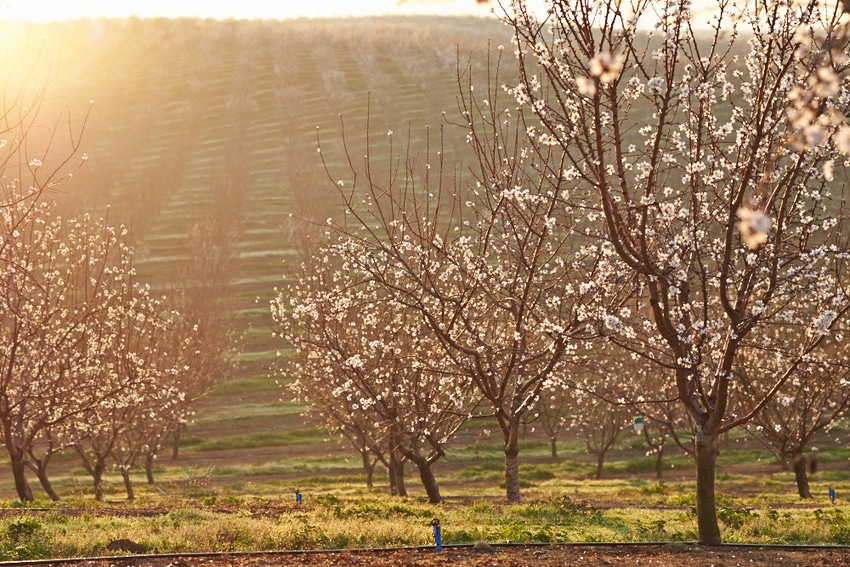March 6, 2018

Communication is the first and most vital step to setting the stage for a successful season with a strong pollination of the almond crop and careful consideration of the health of visiting honey bee hives in light of pesticide use and timing.
Establishing a clear chain of communication in advance of each season can help ensure responsibilities are met, and information is reported accurately. That chain starts with the direct link between grower and beekeeper/bee broker, and with others in the chain: farm managers, PCAs and pesticide applicators. Agricultural commissioners also own a vital link in the communication chain since they retain information on hive locations within their county. All stakeholders have responsibilities in terms of maintaining honey bee health.
A key to successful pollination is that agreements are made ahead of bloom and should include a pesticide plan that outlines which pest control materials may be used. Aspects of this include the following principles.
Avoid Applying Insecticides
Avoid applying insecticides, except Bacillus thuringiensis (Bt), during bloom. Ongoing research has shown that a number of insecticides labeled as safe for adult bees affect developing immature brood in the hive. Research also shows it is wise to avoid tank mixes of insecticides and fungicides (except for Bt), as these mixes have increased bee toxicity. Fortunately, there are alternative insecticide IPM timings for pests such as peach twig borer outside of bloom. These are outlined in the UC Statewide IPM Program online at www.ipm.ucdavis.edu.
Balancing Disease Control and Bee Safety
Of course, disease protection during almond bloom is important, and fungicides are customarily needed. An important practice is any fungicide application deemed necessary during bloom should occur during the late afternoon and evening when bees have completed foraging for the day and neither bees nor exposed flower pollen are present. This avoids contaminating pollen with spray materials.
Also, adult bees that come in contact with agricultural sprays will not be able to fly because of the weight of the spray droplets on their wings until the spray dries. Furthermore, spraying while bees are foraging can degrade floral scent chemicals that the bees “home in on.” It is also important not to spray hives with any pesticide spray application. Spray rig drivers should turn off nozzles when near hives for all materials applied.
Lastly, be cautious about adjuvants, as emerging research indicates adding additional adjuvants can negatively impact bee health. The UC publication, “Efficacy and Timing of Fungicides, Bactericides and Biologicals for Deciduous Tree Fruit, Nut, Strawberry and Vine Crops” notes most fungicides are formulated with adjuvants, including wetting agents, spreaders and stickers. With few exceptions, adjuvants do not statistically improve the efficacy of fungicides for managing diseases. Although there is limited information on the interaction of adjuvants and fungicides, it is best to follow a conservative approach.
Other Important Considerations
If treatment is deemed necessary, growers/PCAs/applicators should contact their beekeepers as well as contact county ag commissioners so that beekeepers with nearby managed hives are notified 48 hours in advance. Beekeepers should register their hives with county agricultural commissioner offices and request notifications for pesticide applications.
Another factor to consider for bloom sprays is the new school rule that took effect January 1. It prohibits the application of any pesticide, either by airblast sprayer or by air, within a quarter mile of public schools and licensed day care centers Monday through Friday between 6 a.m. and 6 p.m. A recommendation is to check with your county ag commissioner office to see if any of your orchards are affected by the rule.
Remember to provide a water source (bucket w/burlap to provide a bee landing platform) if no water is available. Water should be covered or removed before a pest control treatment is made, or emptied and refilled after the treatment is made. Providing clean water for bees to drink will ensure that they spend more time pollinating the crop than searching for water.
Report suspected pesticide related incidences to county ag commissioners. Bee health concerns cannot be addressed without data from potential incidents.
You May Also Like




